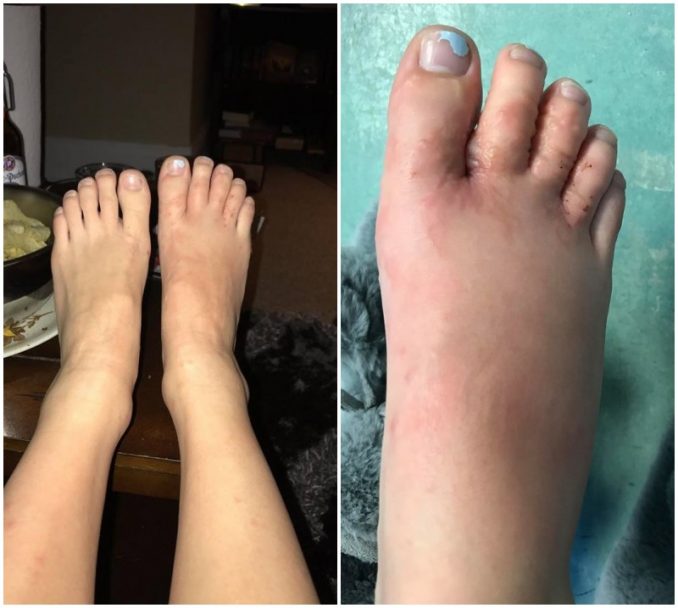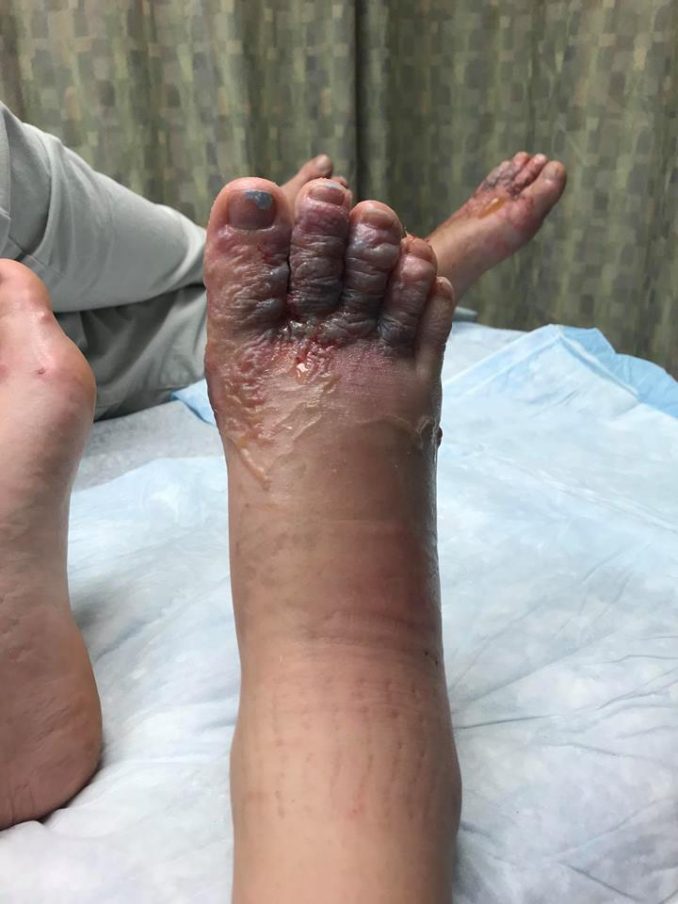Few things are more romantic than a walk on the beach — unless you have the same experience as this couple. When they got home and saw their feet, they gasped. When you see the photos, you just might too. The worst part? Doctors refused to help them after they realized what caused it.

When Eddie Zytner and Katie Stephens took a romantic trip to the Dominican Republic, they never imagined a trip to “somewhere tropical” would leave them in agony. They had no idea how walking barefoot on the beach put them at risk. But, when they returned home, they found out first-hand just how bad the beaches can be.
We’ve all heard countless goose-bump-inducing stories of people coming back from vacation with mysterious and unfortunate ailments, but we never think it’s going to happen to us. When Eddie and Katie were quickly overcome with “incredibly itchy” feet, however, the couple soon realized that this was no ordinary itch. To their horror, it was a full-blown infestation. It might sound like the stuff of urban legend, but it was all too real, as photos proved. Sadly, their troubles were just beginning.

Following her trip to Punta Cana with her 25-year-old boyfriend Eddie, 22-year-old Katie Stephens returned home to Canada, where her nightmare first began to unfold. Wanting to warn others, she took to Facebook with some pretty disturbing pictures that are hard to look at if you are even the tiniest bit squeamish. Addressing the post to anyone traveling “somewhere tropical,” Katie quickly warned, “Please be careful when in the sand” and advised them to “wear shoes!”
She wasted no time getting to the point. “My boyfriend and I recently got back from Punta Cana to discover that we both have larva migrans, in other terms worms in our feet,” she wrote. ” If your feet become incredibly itchy please get it checked out right away since we simply thought it was just bug bites and it became worse as each day passed.”

Cutaneous larva migrans (CLM) is a skin disease, caused by the larvae of various nematode parasites of the microscopic hookworm family. The parasites penetrate the skin resulting in CLM, the most common tropically acquired dermatosis, according to Medscape.
Hookworms are most frequently found in tropical and subtropical environments, as well as the southern region of the U.S., but they’re no longer contained to these areas alone, thanks to international travel. The worms can be contracted while walking on warm, moist sand, where they have the opportunity to enter the skin.
The early symptoms include itching. Although Eddie and Katie initially attributed the annoying sensation to bug bites, the irritation got much worse. After a few days, it eventually erupting into a much more severe condition. The couple soon noticed major swelling, bumps, and blisters on their feet, according to Elite Daily. This was still just the beginning of their nightmare, however.
The couple went to the hospital and ended up seeing three different doctors before they were correctly diagnosed and prescribed a course of treatment, CTV News reported. The doctor who finally diagnosed the couple had recently seen a similar case with another international traveler. Still, their problems were far from over.

“I have dozens of worms in my feet, and so does Katie. It’s kind of sickening to think about,” Eddie said, according to Windsor Star. “It’s pretty gross. It’s something living in your body that’s not supposed to be there.” Making matters worse, even once properly diagnosed, getting treatment wouldn’t be easy.
“To top it all off, Health Canada denied our request to receive the medicine (ivermectin) we needed to treat our infection and (we) were forced to get medicine from the states,” Katie explained. Eddie’s mom reportedly drove to America to get the medication the couple needed, causing Katie to sarcastically add, “Thank you Canada for your lovely healthcare you provide for us!”

As Daniel Caplivski, MD, associate professor of infectious diseases at the Icahn School of Medicine at Mount Sinai, told Cosmopolitan, people should wear shoes to protect their feet when they walk the beach. The sand in your toes might feel nice, but the parasitic infestation that could result certainly does not. What’s more, as the couple recovered, they were forced to use crutches — another painful inconvenience that hardly made the barefoot walk on the beach worth it.
Although they certainly are difficult to look at, the couple shared the photos on social media to alert the public and raise awareness of the possibility of parasitic infections while traveling. They also hope the post will help others recognize the symptoms early so that, should anyone ever go through the same thing, they will know to act fast and seek medical attention. Hopefully, their country won’t deny them the medication.





One thought on “Couple Noticed Their Feet After Walk On Beach, Doctors Refused To Help”